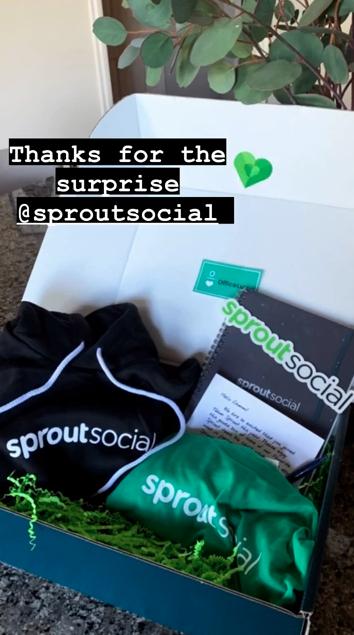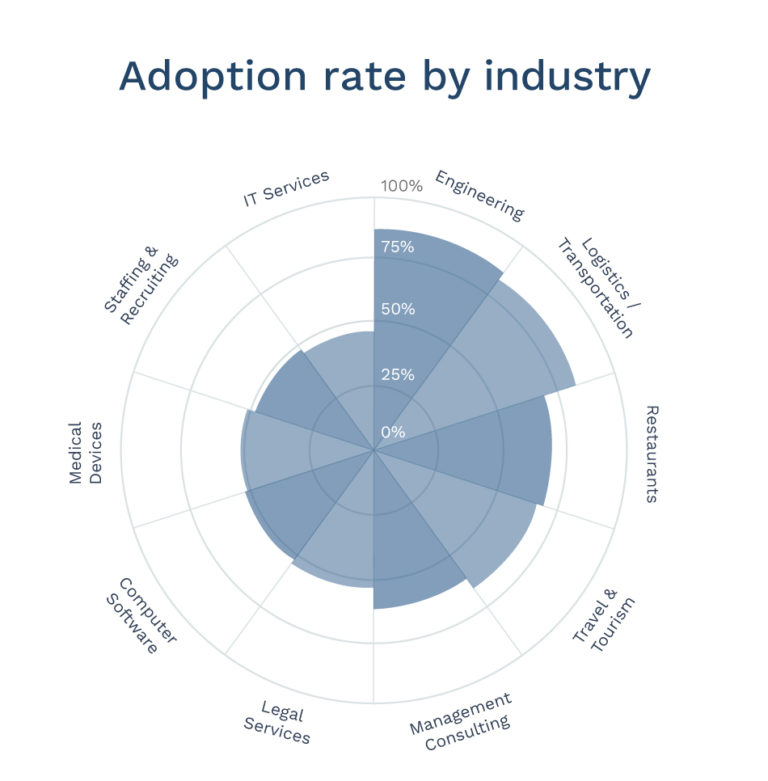What is employee advocacy and does it really work?
Written by Jenn Chen
Published on November 1, 2021
Reading time 8 minutes

Some of the best advocates for your brand can be your own employees. Oftentimes, when people think about brand advocates, they may think of external people, such as social media influencers. While this may be true, consider this: your employees know your company inside out and can lend a unique voice to your brand’s reputation.
Employee advocacy has a lot of benefits for both the company and the employee. Chances are that your employees are already on social media and talking about their work. Why not harness that into a thoughtful employee advocacy program that gives a win-win to everyone involved?
What is employee advocacy?
Employee advocacy is the promotion of a brand or company that an individual works at. In this video, we dive deeper by defining how employee advocacy can supercharge your social strategy and show you how to start a successful program in five steps.
A good employee advocacy strategy will enable your employees to:
- Amplify company messages and promotions, which increases brand awareness
- Positively share about their experiences and work life, offering an “inside look”
- Act as an expert and recommend the company’s products and services to friends and family
Types of employee advocacy
There are a few ways that employees can become advocates. Some don’t even require a formal program and might already be in action in your company.
Company swag & merch
Sending out swag and merch is a classic technique for enabling your employees to get the word out. While it predates social media, posts sharing swag on social media are common and another great way for employees to highlight company culture.

Useful and well-designed swag are always hits with employees. Put on a branded cozy sweatshirt or slap a cute branded sticker on your laptop cover and you’re instantly, subtly promoting that company.
Internal incentives & recognition
Happy employees naturally become brand advocates. Which means that your company culture and workplace environment need to be set up in a way that celebrates accomplishments, privately and/or publicly.
One classic example of this is an employee of the month program, where a valued employee receives public recognition and sometimes, monetary compensation or some other reward. Employee recognition software programs also exist where anyone can send out compliments or rewards to others within the company. Even starting small, such as setting aside some time in a meeting for recognition, is a step towards more effective employee advocacy.
Social media advocacy
Social media has become a valuable component to a successful employee advocacy program. Social media advocacy is when the employee posts about the company in a positive way on their personal accounts. Coordinating an effective social media advocacy strategy can involve more work than the other two types, but it can also have a high ROI.

In a recent Edelman study of consumer trust, 63% of 18-34 year olds surveyed trust what influencers say about brands more than the brands themselves. When both your customers and your employees are already on social media, it makes sense to utilize this channel for advocacy.
Benefits of employee advocacy
Both the company and employee win in the right employee advocacy scenario.
The benefits of a program crosses multiple departments:
- Increased brand awareness for marketing
- Wider personal network for sales
- Positive workplace environment for recruiting and HR
- Subject-matter expertise for industry thought leadership
Benefits for the company & brand
Having an employee advocacy program in place offers many benefits for the company and can be used in conjunction with an employer branding program.
- Increases brand awareness reach. One study found that company branded messages had a 561% reach when shared by employees compared to branded channels. Think of it as another way to organically grow your brand.
- Improves employee performance. The same study also found that companies that had high employee engagement outperformed those with no engagement by 202%.
- Maintain control over brand messaging. When you have a formal program in place, content is provided for your employees to redistribute out. The important core parts of brand messaging can be retained while employees are encouraged to personalize individual details.
- Drives more qualified leads. When employees post positively about their workplace and company culture, others passively absorb this information. It’ll be easier for recruiters to find more people who are already knowledgeable about the company and are interested in working there or doing business as customers.
Benefits for the employee
Because a large part of this program involves continuous execution from the employees, the benefits need to be substantial. Luckily, they are.
- Easy, ready content to use. When you provide the links and copy that can be used for social media, employees can either use it as-is and save time, or add a personal touch if they prefer to be more active on social with their own voice. Neither takes that much time, making it easy for someone to post.
- Helpful for those who aren’t social media power users. Some people aren’t on social media all the time but still want to be an advocate. They might feel hesitant at posting, which is why having available content is great for them. In addition, the more they post, the more familiar and comfortable they feel with using social media.
- Establishes thought leadership. A recent study with B2B decision-makers on their perception of thought leadership found that 89% of them say it has enhanced their perceptions of an organization. Branded content is not the only content that can be shared. Articles within your industry, when shared with commentary by employees, helps establish them as a knowledgeable person in the field.
- Networking opportunities. Posting on social media naturally creates networking opportunities. The more you interact with others, the more connected they feel to you.
Tips for launching an employee advocacy program
If you’re starting from scratch, it might seem overwhelming to set up your own employee advocacy program. That’s why created a checklist to take you through setting up an employee advocacy program step by step.
1. Incentivize participation
While benefits like networking opportunities and thought leadership are nice to have for employees, they aren’t always immediately rewarding. To encourage participation in the program, offer perks and incentives.
In a Social Media Today study on methods of recognition, the top two most successful were company recognition (39%) and monetary incentives (19%).
These types of rewards could go along with a program like being awarded employee of the month. For recruiting, an employee referral bonus is common. You can use employee recognition software tools to encourage team members to recognize their peers’ efforts, such as by highlighting shoutouts throughout the wider team or developing rewards and incentives.
2. Encourage authenticity
An employee advocacy benchmark report found that social media posts from employees that were personalized generated 64% more engagement than those that did not. Once employees are comfortable with sharing branded content, encourage them to edit the copy and put their own touch on the post.
Just like how brand voice matters to the company, your personal voice also matters. Adding a line or two to a post encourages authenticity and establishes your personal brand.
3. Provide training
If someone is not a Very Online person, they won’t be as comfortable posting on social media. Providing social media training goes a long way in establishing confidence in their skills.

Regardless of what type of program you choose, you’ll need to train employees on how to navigate it. Software like Sprout Social’s Employee Advocacy tool will need an introduction so people feel comfortable using it but the benefit is that all the components of a successful program are in one place.
Training does not stop, either. You’ll want to constantly evaluate how the program is performing, make sure that you’re communicating well internally and do additional training as needed, especially as platform features evolve and change.
4. Set goals & KPIs
Like any other strategy, you need to establish the “why” and “how” of your program. Earlier, we discussed the benefits of having an employee advocacy program and provided resources on how to create one.
Now, it’s time to determine what you will use to measure its success. A benchmark study found that the average adoption rate across all industries was 53%. However, keep in mind that this average did vary across industries and that you should not expect this when you first start out.

Other factors like company size and use case also affected the adoption rate. Let’s explore additional metrics that help you track the performance of employee advocacy.
How to measure the success of your employee advocacy program
When you use tools like Employee Advocacy for employee advocacy, your entire program lives there. That means that as a brand, you are able to curate content, distribute branded material and keep an eye on analytics. On the employee side, you receive on-brand suggestions for copy, topics that you can follow and ready-to-post social media content.
As a manager of the employee advocacy program, it means you also get insights into key metrics that help demonstrate the success of your efforts.
Here are a few of the most significant KPIs for employee advocacy:
Adoption rate
As discussed earlier, adoption rate is important for knowing how successful your program is. This can be assessed through how many invites are sent out, how many accounts are created and how many are active.
Active participation
As social media marketers, we know that just being on a network doesn’t mean you’re actually on it. Is the account just sitting there or are actions being taken by the user?
Top contributors
Are certain teams or people providing interesting content and receiving a lot of engagement around it? Recognize and thank your top performers.
Organic reach
The employee advocacy benchmark study mentioned earlier found that the average reach for employees is 459 connections on LinkedIn, 433 friends on Facebook and 772 followers on Twitter.
Organic reach is tough to achieve already, so taking a look at how employee advocacy increases that metric should be part of your KPIs.

To make it easy for you, Employee Advocacy tools automatically generate these metrics so you can spend more time making meaningful refinements to your program.
Organic engagement
What kind of discussions are being prompted by employees posting? Are their followers interacting with their content? People are more comfortable talking to individuals online than with a face-less brand. Track how organic engagement is with the content that is shared through employees.
Referrals
This can cover a few different activities. Your sales strategy probably already includes where your leads are coming from. Add a referral source that identifies that it’s from an employee’s social media post. In recruiting, when an employee refers a potential hire, their names are usually documented. And finally, check if your social media referrals to your website have increased since you began the program.
Time to launch your employee advocacy program
Are you convinced yet that you need an employee advocacy program of your own? Don’t be one of those 70% of companies that don’t have a program in place. These programs offer benefits for both the brand and employee: brands enjoy increased awareness and controlled messaging while employees earn rewards and establish themselves as thought leaders in their field. Explore examples of successful advocacy programs in action, from AT&T to Boeing.
Sign up for a demo of Sprout Social today for an all-in-one solution to making the most of employee advocacy.
Recommended for you
View all Recommended for you- Categories
4 social advocacy examples that prove authenticity pays off
Published on February 14, 2023 Reading time 5 minutes - Categories
Employee advocacy stats to secure C-level buy-in
Published on February 7, 2023 Reading time 4 minutes - Categories
Social media policy: A guide for your organization
Published on January 12, 2023 Reading time 9 minutes

Share